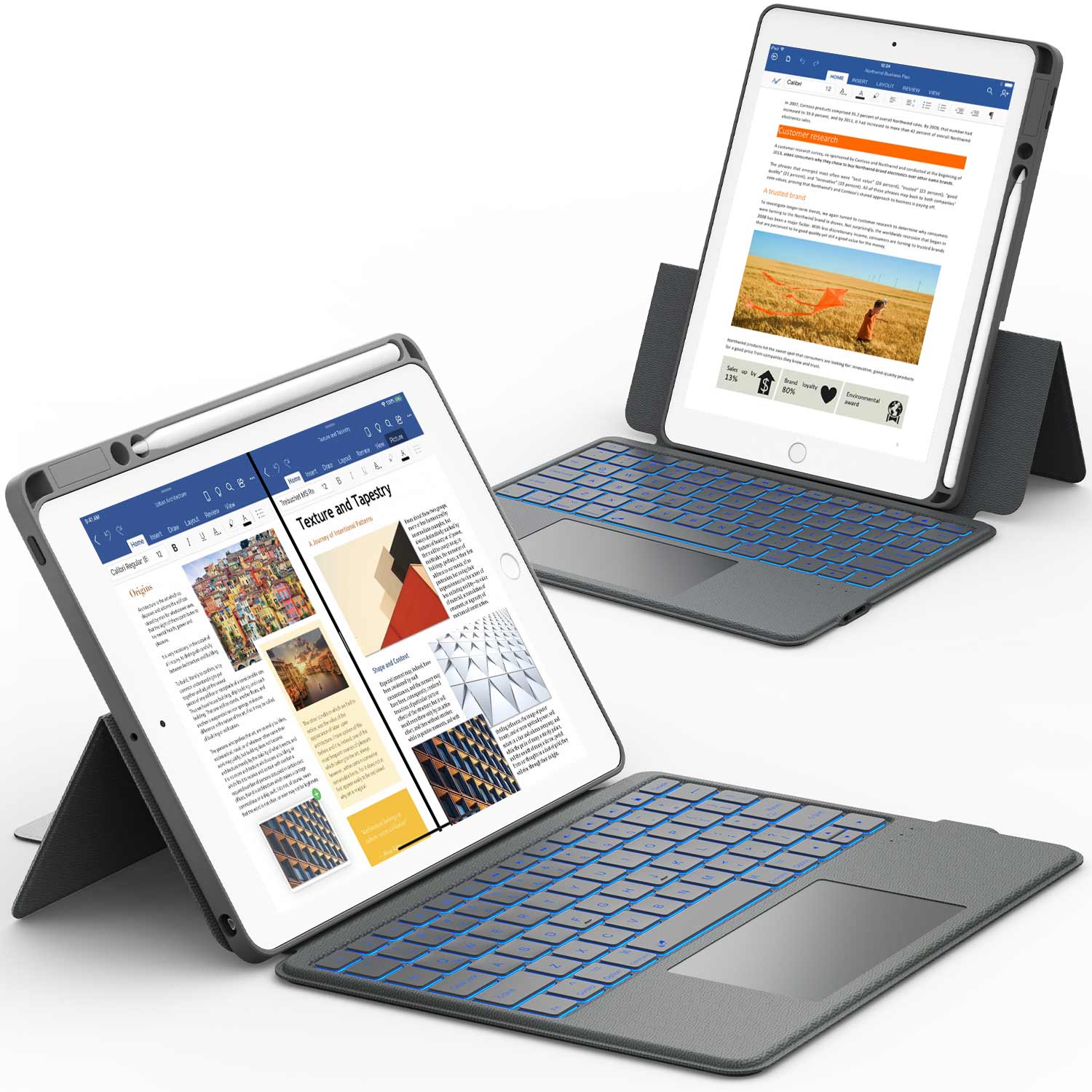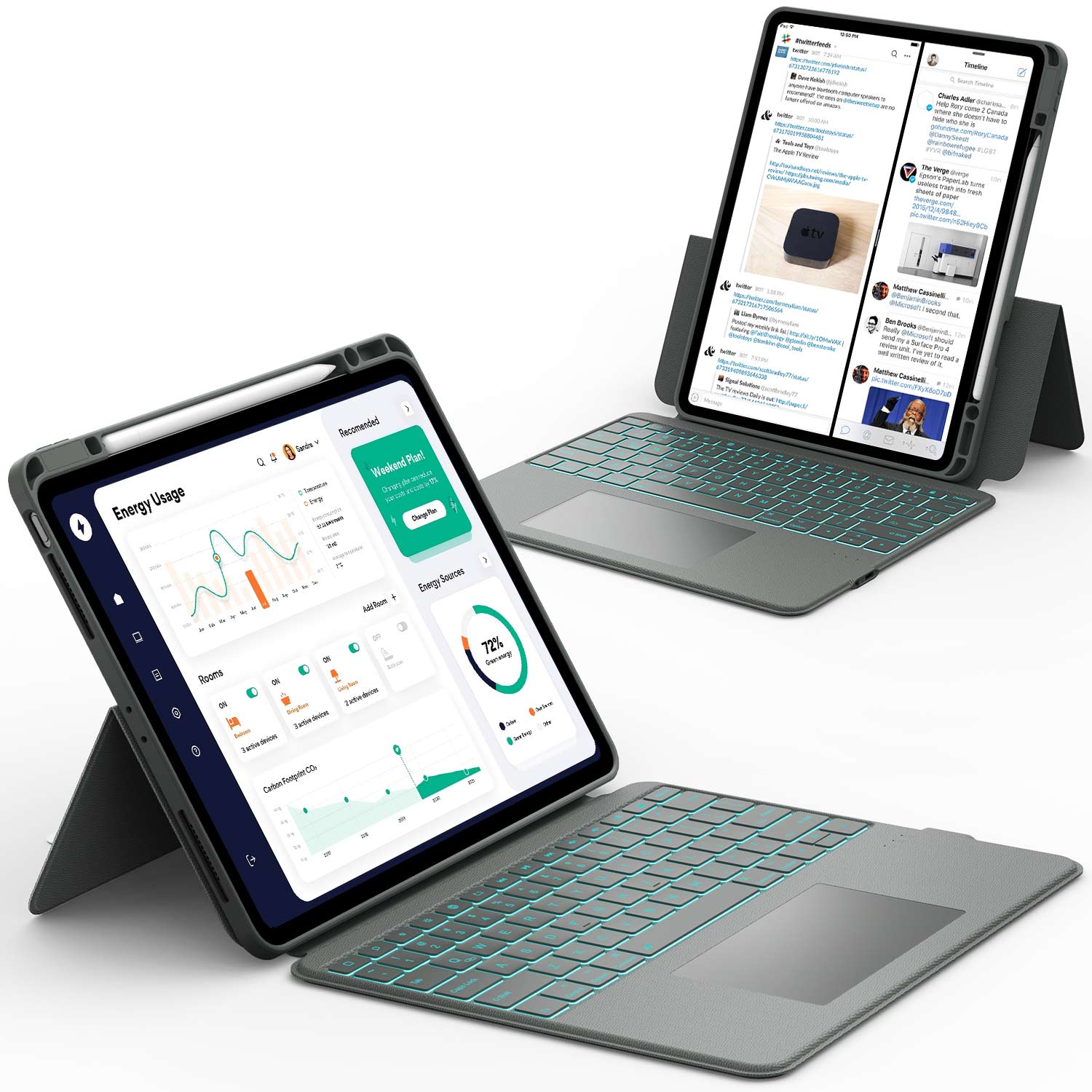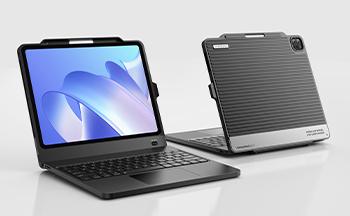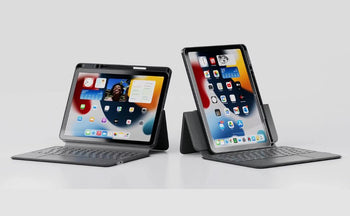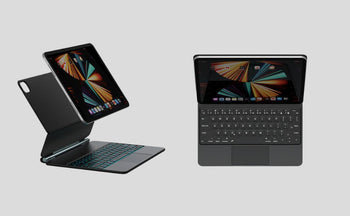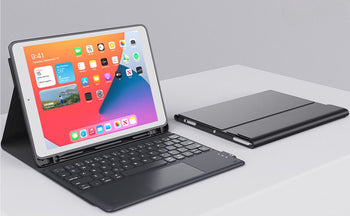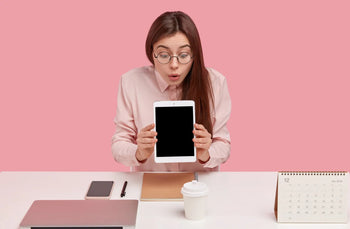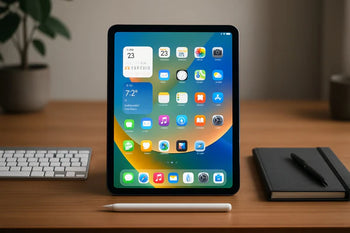If your iPhone texts keep popping up on your iPad, you’re definitely not alone. Apple links your devices through iMessage and other settings, so your conversations can show up everywhere you’re signed in.
You can stop messages from going to your iPad by turning off iMessage or changing the Send & Receive settings in your device’s Messages app.
This guide covers why your messages sync across devices and how to turn that off. I’ll walk you through disabling iMessage on your iPad, managing which numbers and emails can send and receive texts, and controlling message forwarding from your iPhone.
You’ll also see how to keep your devices separate by using different Apple IDs, manage related services like FaceTime, and add some extra privacy steps. By the end, you should have a lot more control over where your messages show up and how your devices work together—or don’t.
Why Messages Appear on Both iPhone and iPad
Your messages often show up on both your iPhone and iPad because Apple links your devices with your Apple ID and built-in messaging features. When you use the same account on more than one device, they share data so you can keep conversations going wherever you are.
Apple ID Synchronization
When you sign in with the same Apple ID on both your iPhone and iPad, Apple automatically syncs things like iMessages, contacts, and photos. That’s why your iPad gets the same messages as your iPhone.
You can check this by going to Settings > [your name] on each device. If both show the same Apple ID, they’re set to share data.
Apple set this up so you can switch between devices without missing anything. If you start a conversation on your iPhone, you can pick it up on your iPad without skipping a beat.
But honestly, sometimes it’s just annoying—your private texts can pop up on devices you don’t want them to. The shared Apple ID is the main reason for this.
iMessage and Continuity Features
Apple’s iMessage service and Continuity features do more than just sync. With iMessage on, your iPhone and iPad both use your Apple ID and phone number to send and get messages. That’s why you see the same texts on both.
Continuity also includes Text Message Forwarding, which sends SMS messages from your iPhone to your iPad. You’ll find this under Settings > Messages > Text Message Forwarding on your iPhone. If it’s on, your iPad gets texts that were sent to your iPhone’s number.
These features are helpful if you want everything in sync. But if you’d rather keep your iPhone and iPad separate, you’ll need to tweak these settings. Turning off iMessage on the iPad or stopping message forwarding are the quickest ways to fix it.
Disabling Messages on iPad
You can stop text and iMessage activity on your iPad by changing a few settings. The two main options are turning off iMessage completely or signing out of your Apple ID in the Messages settings.
Turning Off iMessage
The easiest way is to turn off iMessage on your iPad. This stops the device from sending or getting iMessages, but you can still use other apps just fine.
- Open the Settings app on your iPad.
- Scroll down and tap Messages.
- Switch iMessage to off.
When you do this, the Messages app won’t connect to Apple’s servers for iMessage. Any message sent to your Apple ID will only show up on other devices where iMessage is still on, like your iPhone.
Just know, once you turn off iMessage, your iPad won’t get SMS texts from your iPhone either. If you only want to stop message syncing, this keeps your iPad out of the loop without messing with your phone.
Signing Out of Apple ID in Messages
You can also stop messages from reaching your iPad by removing your Apple ID from Messages. This is handy if you still want iMessage on other devices but don’t want your iPad included.
- Open the Settings app and go to Messages.
- Tap Send & Receive.
- At the bottom, tap your Apple ID.
- Pick Sign Out.
After you sign out, your iPad disconnects from the Apple ID used for iMessage. That means the device won’t send or get messages tied to that account.
This method is more flexible than just turning off iMessage. You can keep iMessage on your iPhone but remove it from your iPad. If you change your mind, you can always sign back in later.
If unwanted texts keep popping up on your iPad, you’ll want to fix it fast. By reading our iPad Hard Reset Guide, you’ll also learn how to troubleshoot other common iPad issues.
Managing Send & Receive Settings
You can control which devices get your messages by changing the Send & Receive settings. These let you pick which phone numbers and emails link to iMessage, and you can remove ones you don’t want.
Customizing Phone Numbers and Emails
Open the Settings app on your iPad and tap Messages. Then hit Send & Receive. You’ll see all the phone numbers and emails tied to your Apple ID.
Look under “You can receive iMessages to and reply from”. Uncheck any numbers or emails you don’t want on your iPad.
For example:
|
Option |
What It Does |
|
Phone Number |
Lets iMessages show up on devices signed in with your Apple ID |
|
Email Address |
Sends iMessages to devices where the email is turned on |
If you want messages only on your iPhone, leave just your phone number checked there and uncheck it on the iPad. You can keep an email active if you want iMessages separate from SMS.
This is helpful if you share an Apple ID with someone or use different emails but only want certain ones on each device.
Removing Unwanted Accounts
Sometimes an extra account, like a work email or shared Apple ID, makes messages show up on your iPad. To fix this, go back to Settings > Messages > Send & Receive.
Tap the Apple ID at the top. Choose Sign Out if you don’t want that Apple ID linked to iMessage on your iPad.
If you just want to remove one email but keep the Apple ID, uncheck that address instead of signing out completely.
Removing accounts stops messages from syncing to devices you don’t use or want connected. This way, your iPad only gets messages from the accounts you actually need.
Adjusting Message Forwarding from iPhone
You can control which devices get your texts and iMessages by changing settings on your iPhone. This means checking message forwarding options and deciding if you want iMessage on your iPad.
Disabling Text Message Forwarding
Text Message Forwarding lets your iPad send and get SMS texts through your iPhone. If you want to stop this, you’ll need to change the setting on your iPhone.
- Open the Settings app on your iPhone.
- Tap Messages.
- Select Text Message Forwarding.
You’ll see a list of devices signed in with your Apple ID. Any device with the switch on can send and get SMS texts.
Turn off the toggle next to your iPad. Now, your iPad won’t get SMS messages from your iPhone.
If you have more than one device, you can turn off forwarding for just one or all of them. This only changes SMS texts, not iMessages.
Controlling SMS and iMessage Delivery
iMessages use your Apple ID and show up on every device signed in with that account. To stop them from showing up on your iPad, you’ll need to change iMessage settings.
On your iPad:
- Open the Settings app.
- Tap Messages.
- Switch iMessage off.
This takes your iPad off the list for receiving iMessages tied to your Apple ID.
On your iPhone, you can also limit which addresses send and get iMessages. In Settings > Messages > Send & Receive, uncheck any emails or numbers you don’t want linked.
Keeping your texts private is simple once you know the right settings. Read our article iPad Widgets Explained: Add, Stack, Organize to explore more ways to personalize your device.
Separating Devices with Different Apple IDs
Using the same Apple ID on both your iPhone and iPad is what causes messages to sync. The best way to stop this is to create separate Apple IDs and give each device its own account.
Creating a New Apple ID
You can make a new Apple ID right on your iPhone, iPad, or Mac. On an iPhone or iPad, go to Settings > [your name] > Sign Out. After you sign out, tap Sign in to your iPhone/iPad, then pick Create Apple ID.
During setup, you’ll enter your email, password, and security questions. Apple also asks for a phone number to verify your account. Make sure you use a unique email that isn’t tied to another Apple ID.
If you want, you can create an Apple ID online at appleid.apple.com. This works if you want to set up the account before logging out of your device.
Once you make the new Apple ID, it’ll have its own iCloud, Messages, and FaceTime settings. This keeps messages sent to your iPhone from showing up on your iPad.
Assigning Unique Apple IDs to Each Device
After you create a new Apple ID, assign it to the right device. For example, keep your main Apple ID on your iPhone and sign in with the new one on your iPad.
On the iPad, go to Settings > [your name] > Sign Out. Then sign in with the new Apple ID. This disconnects the iPad from the iPhone’s iMessage and iCloud.
Each device now uses its own account for iMessage, FaceTime, and iCloud. Texts and iMessages sent to your iPhone will stay there, and the iPad will only get messages tied to its new Apple ID.
You can manage backups and app purchases separately now. If you still want to share apps or media, use Family Sharing while keeping messages private.
Managing FaceTime and Other Linked Services
CHESONA ArmorDock Series Keyboard Case for iPad Pro 12.9" 6/5/4/3th
Messages often sync with other Apple services. Even if you turn off iMessage on your iPad, FaceTime and shared account stuff can still link your devices. Adjusting these keeps activity limited to the device you want.
Signing Out of FaceTime
FaceTime uses your Apple ID to connect calls across devices. If your iPad is signed in with the same Apple ID as your iPhone, it can get FaceTime calls and show caller info. To stop this, sign out of FaceTime on the iPad.
Open the Settings app on your iPad. Scroll down and tap FaceTime. At the top, you’ll see your Apple ID. Tap it, then pick Sign Out. This removes the iPad from getting or making calls with your Apple ID.
If you still want FaceTime on the iPad but not linked to your iPhone, change the “You Can Be Reached By FaceTime At” section. Uncheck your phone number and leave only the email you want. Now, calls to your iPhone number won’t show up on the iPad.
Restricting Access to Shared Services
FaceTime isn’t the only thing that can link your iPhone and iPad. Features like Handoff, Continuity, and shared Apple ID settings can let calls, texts, and even app activity pop up on both devices.
Open the Settings app on your iPhone. Tap Phone, then find Calls on Other Devices and turn it off.
This stops your iPad from ringing when someone calls your iPhone. It’s a quick fix if you don’t want your iPad acting like a second phone.
If you’re using the same Apple ID on both devices, your iPad might still sync messages, contacts, and purchases. Try switching to Family Sharing instead of using a single Apple ID for everyone.
Family Sharing gives each person their own account, but you can still share purchases under one family group. It’s just less messy.
Want to make your iPad distraction‑free? Check out How To Take Off iPad Case Easily Without Damage for more practical iPad tips.
Additional Privacy and Security Tips
Want to keep your stuff private? It helps to clean up old data and lock down certain apps. These steps make your iPad safer and put you in charge of what’s on it.
Deleting Old Conversations
Old chats in the Messages app can hold personal info like addresses or account numbers. If someone else gets your iPad, they might see things you’d rather keep private.
Head to Settings, then Messages > Keep Messages. Pick how long you want to keep conversations—30 days, 1 year, or forever.
Choosing a shorter timeframe can clear out old stuff without you having to delete it one by one. If you want to remove a specific chat, just swipe left on it in Messages and tap Delete.
This is handy for getting rid of threads with sensitive info, like one-time codes or bank details. Also, check your email apps and delete old emails that have private stuff in them.
Restricting Access to Sensitive Apps
Even if you clean up your messages, someone could still open the Messages app or email app if they grab your iPad. Locking down those apps is a good move.
Open Settings and tap Screen Time. You can set an App Limit or use App Lock with a passcode for apps like Messages or Mail.
This way, only you can open them. You can also turn on Guided Access in Settings > Accessibility.
Guided Access locks your iPad to just one app, so if someone borrows it, they can’t peek at your messages or email. For even better security, set a strong device passcode and enable Face ID or Touch ID.
Keep Your iPad Protected While Staying Message‑Free
If you’re adjusting your settings to stop texts from syncing, it’s also a good time to protect your iPad from everyday wear. Chesona offers durable cases that balance function and style.
- Explore the iPad Cases With Stand collection for hands‑free viewing while you work or relax.
- For heavy protection, check out the Heavy Duty iPad Case collection.
- Boost productivity with the iPad Keyboard Case With Touchpad collection.
⭐ Recommended products:
- CHESONA Rugged Series Keyboard Case for iPad 10/11th Gen 10.9'' — sturdy protection with a built‑in keyboard.
- CHESONA Step Series Keyboard Case for iPad Air 11 inch/ Air 5th 4th Gen 10.9 inch — slim, versatile, and reliable for everyday uses.
Frequently Asked Questions
What steps can I take to prevent text messages from appearing on my iPad?
Go to Settings > Messages on your iPad. Turn off iMessage to block both iMessages and text message forwarding.
If you just want to stop text message forwarding but keep iMessage, open Settings > Messages > Text Message Forwarding on your iPhone. Then, turn off your iPad from that list.
How can I unlink my iPhone and iPad to stop messages from syncing?
On your iPad, open Settings > Messages > Send & Receive. Uncheck your phone number and any email addresses you don’t want linked.
On your iPhone, you can also adjust Text Message Forwarding in Messages settings to control which devices get your texts.
Is there a way to selectively choose which messages go to my iPad?
You can’t filter out specific conversations, unfortunately. But you can pick if your iPad uses your Apple ID email or your phone number for iMessage.
In Send & Receive, select just the addresses you want active. Leaving your phone number unchecked stops texts from syncing over.
What settings should I adjust to ensure my messages only go to my iPhone and not my iPad?
On your iPhone, go to Settings > Messages > Text Message Forwarding and turn off your iPad. On your iPad, you can turn off iMessage or just remove your phone number from Send & Receive.
Can I disable iMessage on my iPad without affecting my iPhone?
Yep. Open Settings > Messages on your iPad and switch off iMessage.
Your iPhone will still send and get iMessages like normal.
How do I change my Apple ID settings to stop message sharing between devices?
Open Settings on your iPad. Tap [your name] at the top, then choose iCloud.
Find Messages and turn it off. This stops your messages from syncing through iCloud.
If you want, you can also sign out of your Apple ID. Just go to Settings > [your name] > Sign Out.
Heads up, though—signing out removes other Apple services from your iPad too. So only do this if you're sure.

